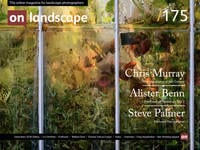Part II

Alister Benn
Alister Benn lives on the west of Scotland with his wife, Ann Kristin Lindaas. Together they run Expressive Photography Ltd, which includes a successful YouTube Channel, a private forum for subscribers, and running small group workshops and retreats in Scotland and northern Spain.
In the first part of this article (Click here to read it), I discussed the transitions of Luminosity and Contrast and how they work together to represent the fundamental realities of nature within our images. In my life and work, I’m very focussed on why things are the way they are; nature, science, beliefs, reality, perception. But, as I teach the art of creativity, I have to marry the why of it all with the how to do it, and with all great dichotomies, they can be jointly exhaustive or mutually exclusive. As I flow into the second stage of this article, I am truly aware of why I do these things, these hows. Without a Why there is very little need for a How!
The art of linguistic creativity relies heavily on tools of communication; words, punctuation, articulation, metaphor and nuance. Yet, in landscape photography, we are essentially mute in explicit language, leaving us with nothing more than luminosity, contrast, colour, texture and transitions. Armed only with this limited palette, we aim to express ourselves, desperate to communicate something, anything to another human being. “I was there, I saw this” are simple statements, being more articulate requires greater degrees of craft and intention. However, whether we are conscious of our statements, or they are byproducts of subconscious processing, there are impacts and consequences of everything within the frame.
At the very start of Part I, I used a few expressions that may have raised some eyebrows; what I call Attention Gradients and the Awareness Fulcrum.

